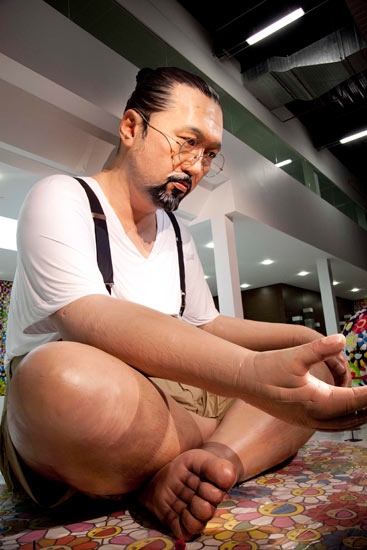 [div class=attrib]From the Guardian:[end-div]
[div class=attrib]From the Guardian:[end-div]
The first pop artists were serious people. The late Richard Hamilton was being double-edged and sceptical when he called a painting Hommage à Chrysler Corp. Far from emptily celebrating what Andy Warhol called “all the great modern things”, pop art in the 1950s and early 1960s took a quizzical, sideways look at what was still a very new world of consumer goods. Claes Oldenburg made floppy, saggy sculptures of stuff, which rendered the new look worn out. Warhol painted car crashes. These artists saw modern life in the same surreal and eerie way as the science fiction writer JG Ballard does in his stories and novels.
When, then, did pop art become mind candy, bubblegum, an uncritical adoration of bright lights and synthetic colours? Probably when money got involved, and Warhol was shot, never again to be as brave as he was in the 60s, or when Jeff Koons gave Reaganomics its art, or when Damien Hirst made his tenth million. Who knows? The moment when pop art sank from radical criticism to bland adulation is impossible to pinpoint.
So here we are in Qatar, where today’s pop art guru Takashi Murakami has a new show. We’re not really there, of course, but do we need to be? Murakami is pop for the digital age, a designer of images that make more sense as screensavers than as any kind of high art. In Doha, the artist who celebrated a recent British show with a giveaway cardboard sculpture exhibits a six-metre balloon self-portrait and a 100-metre work inspired by the earthquake in Japan. This follows on from a 2010 exhibition in Versailles, no less. All over the world, in settings old and new, the bright and spectacular art of Murakami is as victorious as Twitter. It is art for computers: all stimuli, no soul.
[div class=attrib]Read the entire article here.[end-div]
[div class=attrib]Image: Takashi Murakami’s six-metre balloon self-portrait, part of the artist’s latest exhibition in Qatar. Courtesy of Chika Okazumi / Guardian.[end-div]
